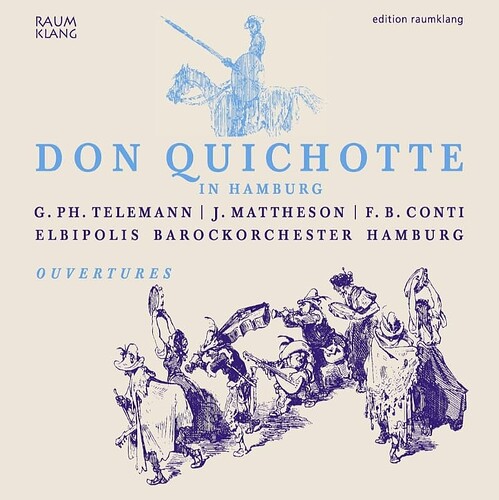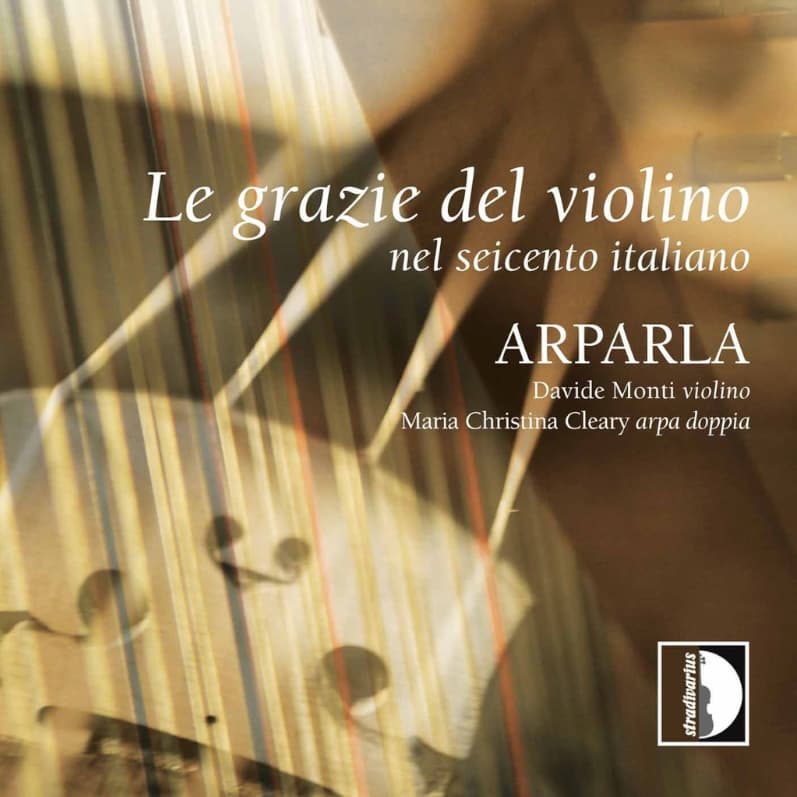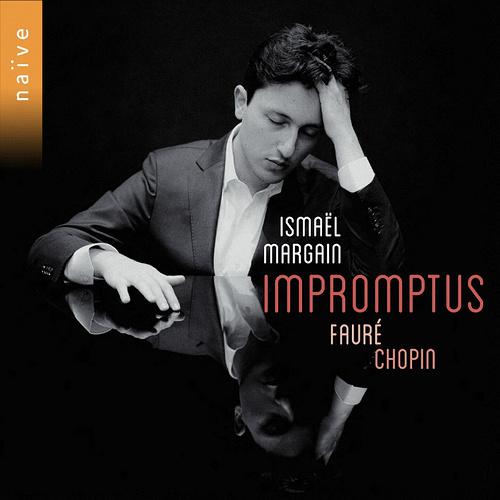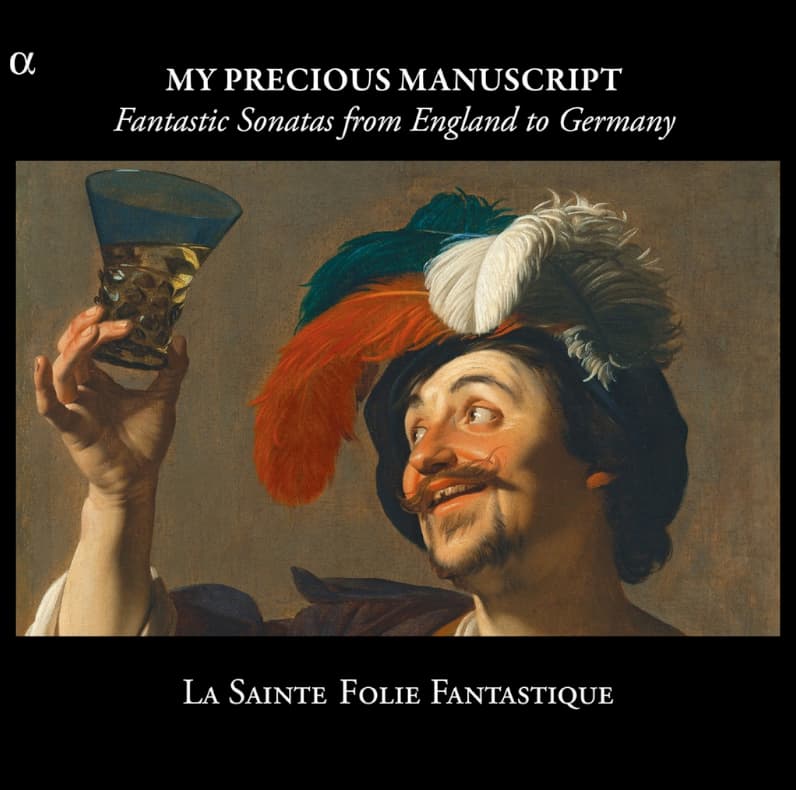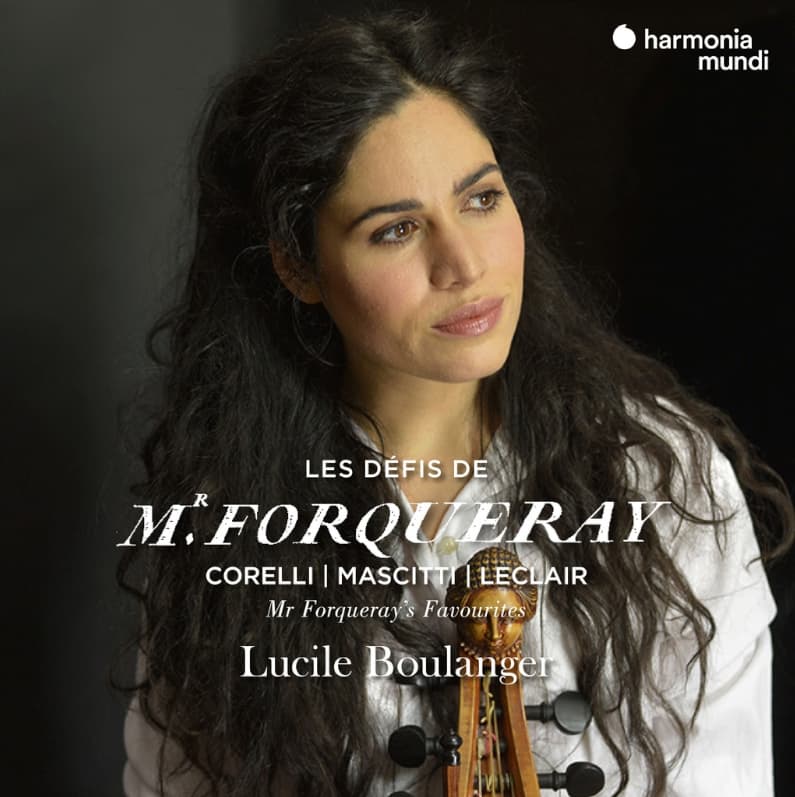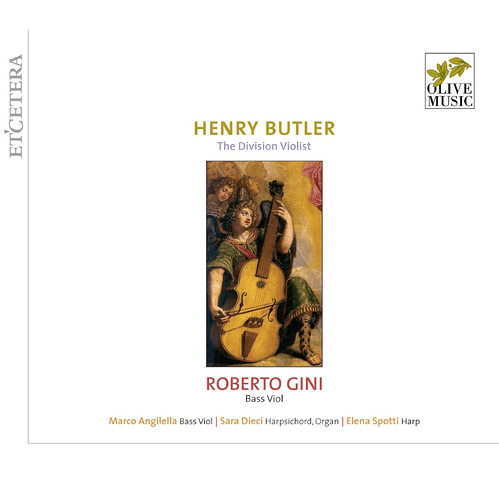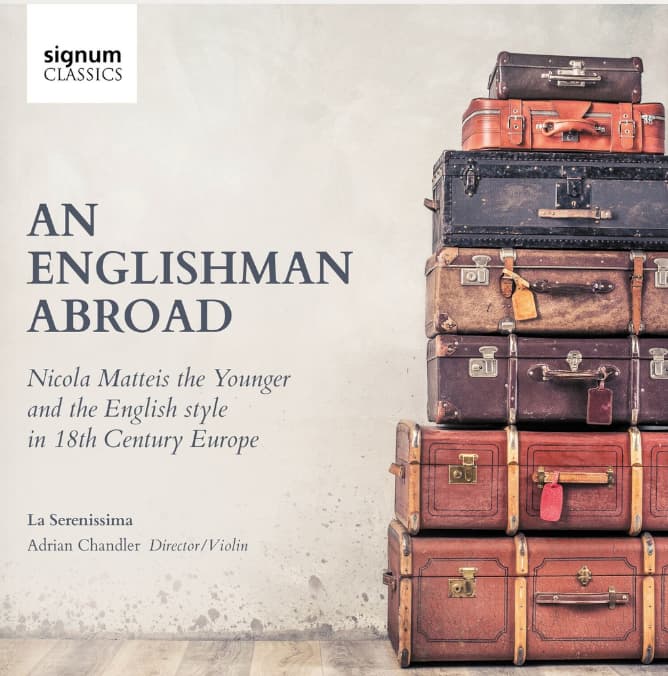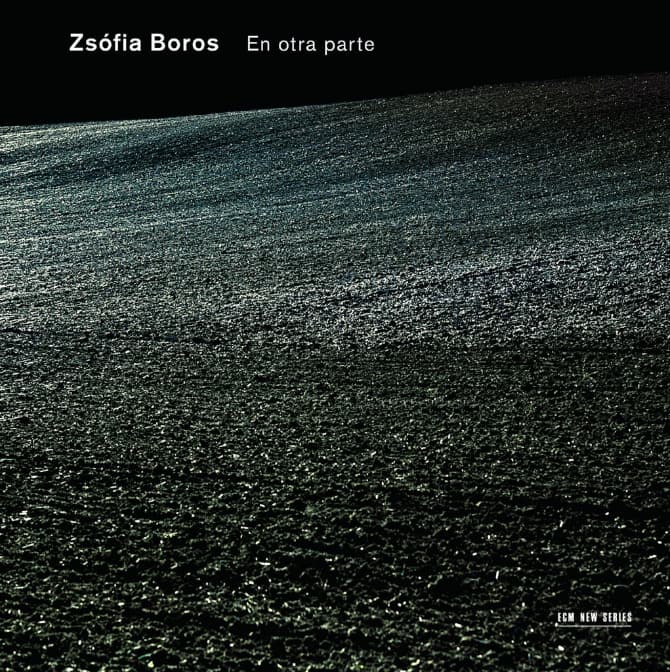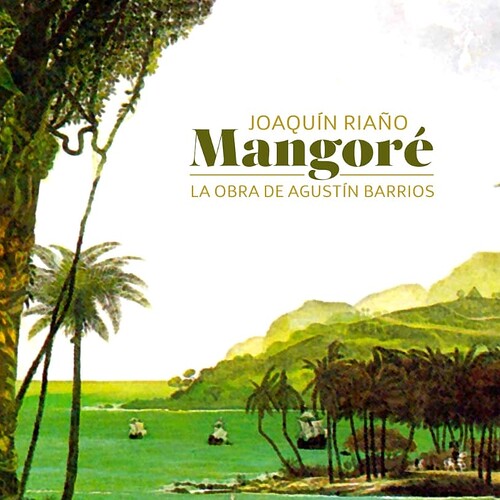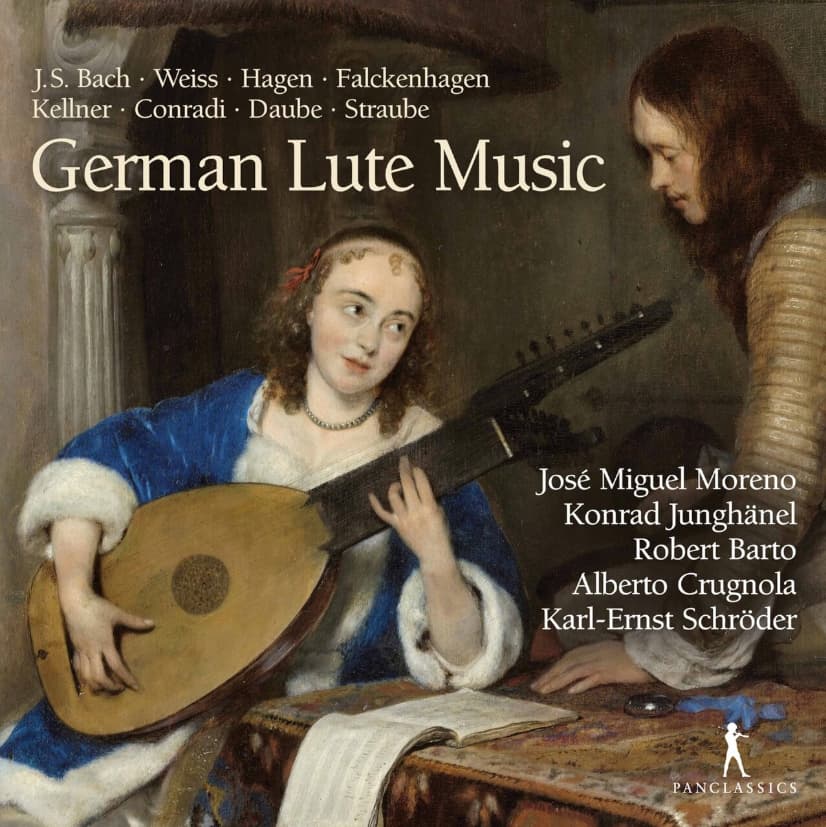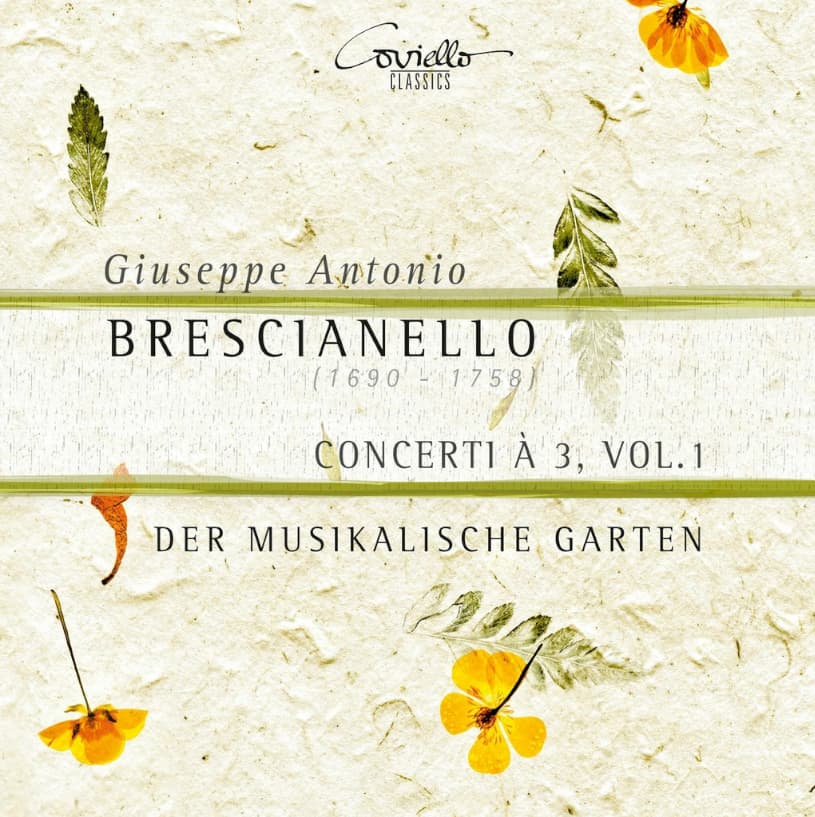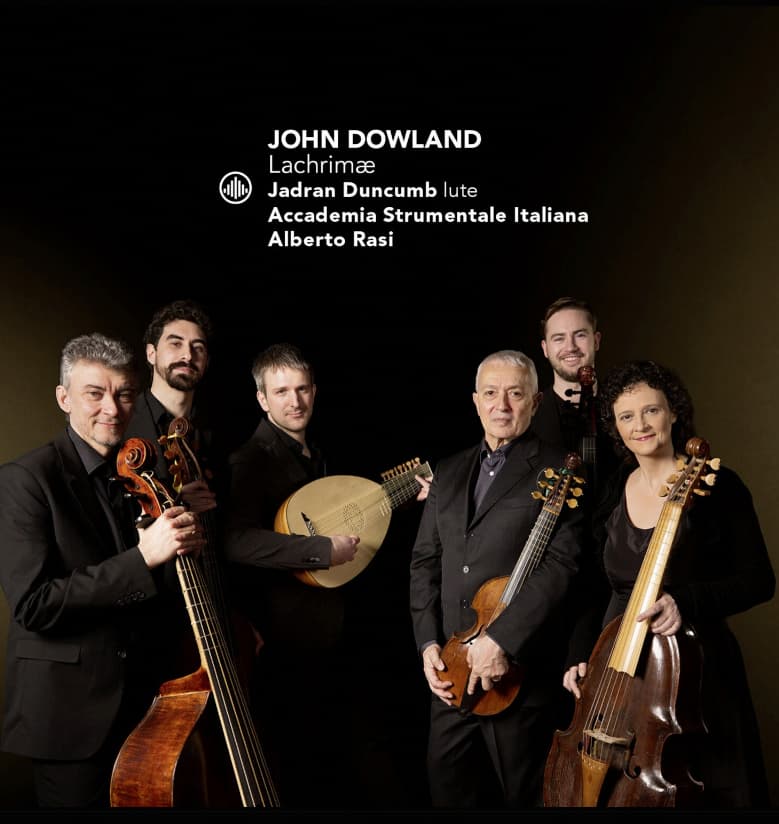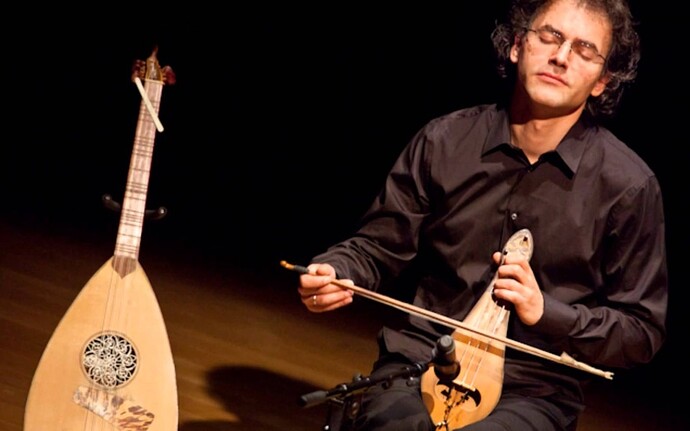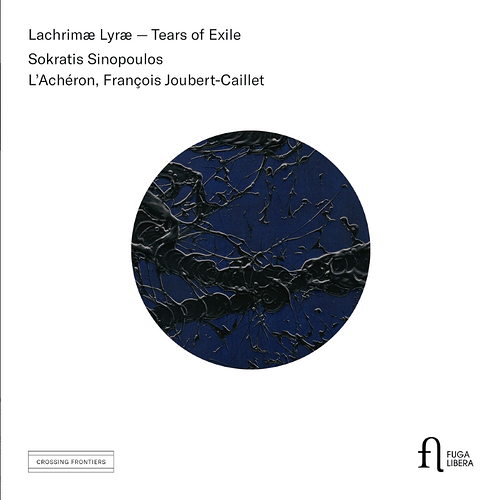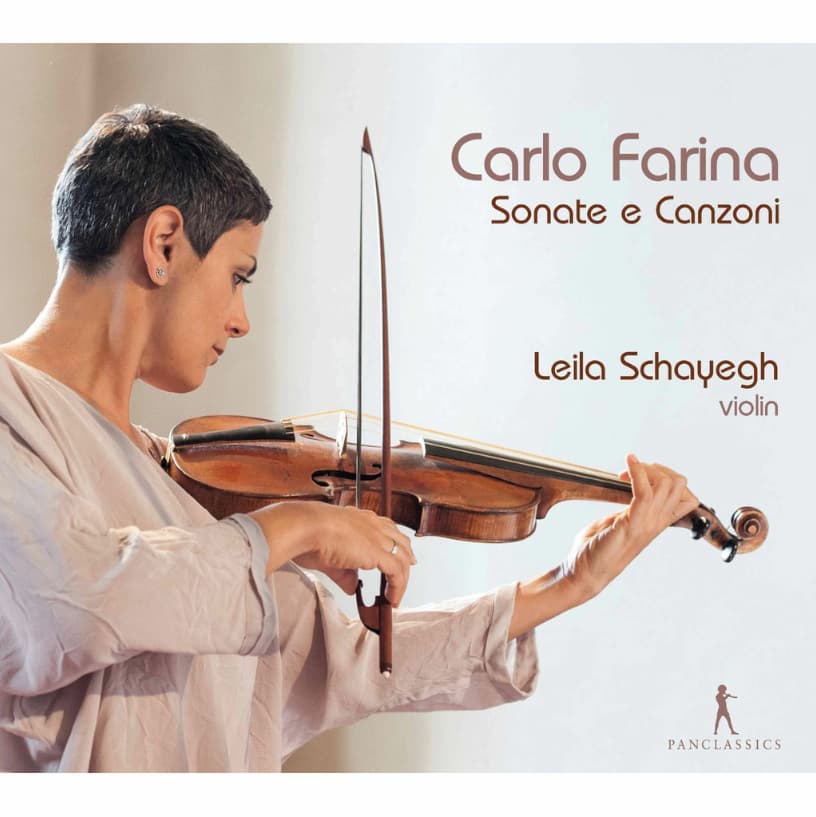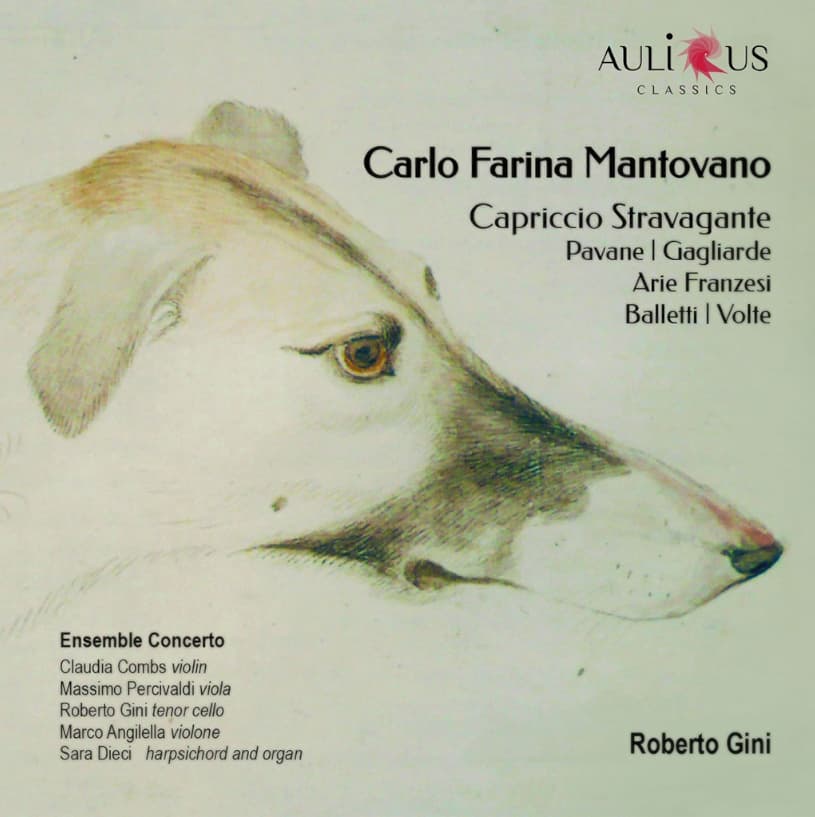A recent release led me to the quite extraordinary Elbipolis Barockorchester Hamburg, and, exploring their discography, I discovered this fantastic album from 2005. Inspired playing and great sound… I can’t remember having seen anything by this ensemble posted before, and there’s more beauty waiting to be sampled…
This is a beautiful album showcasing the violinistic advances of the first half of the 17th century. Davide Monti and Maria Christina Cleary are an Italian/Irish couple, and they have recorded some highly recommended albums on the Stradivarius label. What makes these performances stand apart, is the use of the arpa doppia as continuo instrument. This practice is certainly historically informed, as explained rather well in Johan van Veen’s valuable review.
I will take advantage of this opportunity and recommend van Veen’s review site musica Dei donum… You’ll find every week new reviews of early music releases, and van Veen is not shy to express his dislike of those albums he cannot recommend.
Thank you, Andreas, for bringing this Early Music review site to our attention. Very informative. Wonder if he descends from the great engineer of the same name? The reviews are from one who is obviously deeply engaged with this music and the reviews are labors of love.
For those wishing to venture beyond the beautiful world of early music, another site pointed to by Mr. van Veen, is
A bit of their story
MusicWeb International was founded by Dr Len Mullenger in 1995, as a website for the William Alwyn Society, and hosted on the servers of the University of Coventry. From these humble beginnings, it has developed, purely on a volunteer basis, into the largest non-commercial classical music resource on the web.
I’ve already benefited. Listening to a wonderful Ismaël Margain Fauré/Chopin performance. Many more where that came from. Again, an embarrassment of riches, helpfully curated by guides with deeper listening experience and musical insight.
And, of course I’ve added the Le grazia del violino to my listening queue. Thank you for this, as well.
I will certainly listen to young Ismaël Margain’s Chopin/Fauré album, also to his Schubert album on B Records, as I love that label for its great and exclusive live recordings of younger French artists…
In the meantime I’d like to present an album I discovered through the discography of Lucile Boulanger, a French virtuoso viola da gambist I follow closely. All her albums are quite remarkable, and her 2018 Les Défis de Monsieur Forqueray is outstanding.
In this release from 2013 she is joined by Jerôme van Waerbeke on violin, Arnaud de Pasquale on organ and harpsichord, and Thomas Dunford on archlute. Together they form the ensemble La Sainte Folie Fantastique…
The album takes on pieces from a valuable 17th century manuscript held at the English Durham cathedral. Through its interesting history (explained in detail by Johan van Veen here), it brings together pieces from both German and English background. As stated in the booklet with fine humor, merci également à Nonyme sans qui ce programme eût été bien court… quite a few of the manuscript’s pieces are anonymous. The programming is interesting and with good contrasts, the music quite remarkable and holding well the listener’s interest, the playing skillful and very musical.
Through this album’s pieces I have been introduced to several new composers of the early Baroque, which maybe will lead to some posts at another time…
I enjoyed this. It does flow very well. Thanks.
It feels just right to give Lucile Boulanger her very well-deserved spot on this blog; this is an album to fall in love with the sensual tonalities of the viola de gamba. The playing by both the soloist and her accompanying continuo group is superlative.
Informative and recommended review by Johan van Veen on MusicWeb International:
One composer represented in the Durham manuscript mentioned in a previous post is the Englishman Henry Butler, whose date of birth is unknown, but who is known to have died in 1652.
He was a master of the division upon a ground, which is a solo instrument (viola da gamba) playing a melody and variations over an ostinato bass pattern. As Johan van Veen explains in his informed review, this style of music was popular in 17th century England.
The name mostly associated with this music is Christopher Simpson, who in 1659 published a book titled The Division-Violist, or An Introduction to the Playing upon a Ground. In his book, Simpson mentioned Butler, who was also mentioned by Jean Rousseau and honored through a piece by Andrea Falconiero dedicated to him.
I was surprised when listening to this excellent album by Italian viola da gambist Roberto Gini and his continuo partners. The music sounds fresh and modern, considering the time when it was composed in the first half of the 17th century. The playing is beautiful and can warmly be recommended to those interested in Baroque music.
One additional detail to mention is that the second tune is based on the melody of a popular 16th century love song, already referred to by Shakespeare in Henry II. Its title Callino Casturame remains to this day a mystery, although it has been speculated that the text may be based on garbled Irish Gaelic words.
Wonderful! Along similar lines, but tied to Vienna and with the baroque historical performance group La Serenissima, Adrian Chandler turns in a masterful conductor and soloist performance.
For a guitar treat, please consider listening to the fabulously engineered En otra parte, a collection of Latin American guitar music performed to perfection by Zsófia Boros. Not to underplay Ms. Boros’ remarkable performance, I’m simply amazed by Stefano Amerio’s sound engineering. Singular. The liner notes include a Roberto Juarroz poem that sets a perfect mood for listening to this collection of performances. Her Leo Brower Un dio de noviembre performance is uniquely splendid.
She has two other recordings with ECM New Series, most recently El último aliento, and both are well worth adding to your collections.
Thank you Bill! I have both albums in my library, but I didn’t know about Zsófia Boros’s recent release… I wish she would take up the repertoire by one of my favorite composers of Latin-American music for guitar, Agustín Barrios ‘Mangoré’ from Paraguay. I came to appreciate these pieces years ago, when I worked with the sister of Colombian guitarist Joaquín Riaño, who at that time studied and worked in Paris. She gifted me with the two volumes of Mangoré he had recorded by then. There’s also a nicely recorded album by John Williams, and quite some more…
For me El último aliento got tagged “listed for best 2023”.
I’ll search for Mangoré thank you
In the last 2 days I’m all in to the 12h 47min of German Lute Music
I certainly appreciate Chandler’s work with La Serenissima, and enjoy several of their albums in regular rotation. Maybe their repertoire is a little heavy on Vivaldi; there is scarcely an album without a Vivaldi work being included. This is even true for this recent release, where the English influence on the obligatory Vivaldi violin concerto is not quite clear to me… Oh well, they must feel that La Serenissima without Vivaldi wouldn’t be possible… ![]()
Another composer heavily represented in their output is Giuseppe Antonio Brescianello, who for his musical work at the Württemberg court in Stuttgart (where I have strong family ties) is somewhat close to my heart. Other recordings with works by this high-baroque composer I like are the two volumes released in 2017 and 2019 by the rather young ensemble Der Musikalische Garten, where the Colombian violinist Germán Echeverri Chamorro is leading.
Wonderful story. Thank you for sharing. When guitar player extraordinaire John Williams describes Barrios as more of a composer than Andrés Segovia, one attends. I had encountered some of his work performed by Xuefei Yang (as liquid-toned a guitarist, reflective of perfect fingering, as there is), Roland Dyens (Citrons doux) and Jason Vieaux (Play) and found them fascinating. Some exquisitely delicate. Some boisterously folk. I now look forward to hearing Joaquín Riaño’s performance.
It would indeed be a treat if Ms. Boros would consider performing some of his works, particularly La Catedral. I sent her a note to that effect just a few moments ago. Her choices for the ECM New Series recordings have been splendid, but one can wish.
Yes, mostly delicate and precious miniatures… And with that very particular South-American folk influence, which many composers from the more heavily European-influenced Argentina and Brasil don’t evidence…
![]() I thought about that for a moment, but then let the idea drift off… Now I hope you’re successful with your suggestion… would be something…
I thought about that for a moment, but then let the idea drift off… Now I hope you’re successful with your suggestion… would be something…
Oh! I have no expectations. Just looking forward to hearing more by Ms. Boros. Putting together a list for a performance has to fit with the artist’s interests at the time, the producer’s interest/agreement and how well a composition can be combined with other pieces to create a through story of a sort. A musical puzzle. Still, can’t hurt to have drawn attention to composer Barrios. Maybe a seed that sinks in or to spit out.
Following up on the lute and English viol consort discussion earlier. This was released a few weeks ago. I’ve just started playing it for the first time. Sounds good so far…
When the other day @Traian_Boldea posted L’Achéron’s latest release with Marais pieces, I was reminded of their 2019 album with Dowland’s famous Lachrimae, integrating Socrates Sinopoulos’s Cretan lyra as melody instrument. Listener’s opinions are divided over the result, but I for one love the sound and am delighted.
Today I’d like to introduce a new ensemble founded in 2016 by young musicians living in the UK, Italy, Spain and France, specializing in the historically-informed performance of instrumental music of the 17th and 18th centuries. They are being supported by the European EEEMerging program, and their first commercial recording was released two years ago on the French label Ambronay. It’s dedicated to music from the Italian Seicento, and listening for the first time to their vigorous and fresh playing, I was impressed. I can only imagine how much fun it must be to see these musicians live, as the recording vividly expresses their joy and love for the music they interpret.
The album cover is actually directly related. Amandine Beyer/Gli Incogniti collaborated with the Belgian dance company Rosas to produce a dance performance set to the Mystery Sonatas. The album itself is the music performance from the collaboration, and the image is from the dance performance.
The performance was reviewed in The Guardian, which said that it has moments of brilliance but 135 continuous minutes of intense performance is too much for audiences to handle. This is something can relate to. I love the Mystery Sonatas but I couldn’t listen to it all at once in one sitting. I break it into sessions spread out over time.
I enjoy this album very much. In the program notes, Beyer wrote that for her it evokes images of motion. Her playing conveys a sense of dance and spontaneity that I think is a fresh view of the music.
Thank you @mSpot for pointing this out. It is a nice recording that I’ve also enjoyed. Seeing the dance performance with this music would have been a treat.
Carlo Farina was born around 1604 in Mantova to a father employed as musician at the Gonzaga court. In 1625 he left Italy and went to Dresden, where he was employed from 1626 to 1629 as concert master of the court orchestra, under the direction of Heinrich Schütz. From 1629 to 31 he was active in Bonn, and was then forced to return to Italy, as religious wars raging at the time over large parts of Europe exhausted the financial resources of his employers. After positions held at Parma, Lucca, Massa and Gdánsk, he came at 1638 to Vienna, where he died of the plague a year later.
Farina’s progressive style of violin playing is said to have paved the way for further generations of German violinists, such as Schmelzer, Westhoff, Biber and Walther.
I have selected two beautiful albums showcasing Farina’s music and musical style, for those interested in early virtuoso violin music. It’s well worth reading the booklet notes of Schayegh’s album, here I cite from her Personal Word:
“For the present recording, we have drawn inspiration from illustrations and texts showing that, at the time of Farina in italy, France and north- ern Germany, the violin did not rest upon the clavicle, but rather lower down, just above the breast. the bow was also held differently: the thumb held the bow under the frog, at the point where it connects to the hair. Differences could also be noted with regard to the cello: the bow was held with the upturned hand when playing the viol. Finally, four pure gut strings were mounted on the violin, a setting which makes the overall sound brighter but also rougher.”
